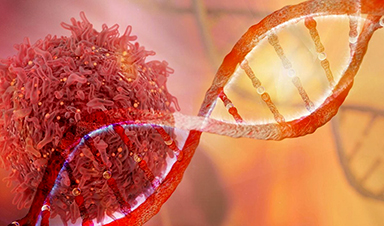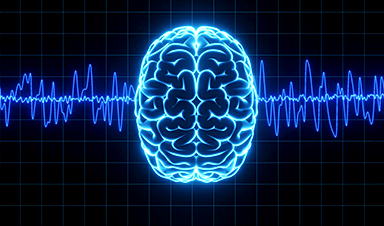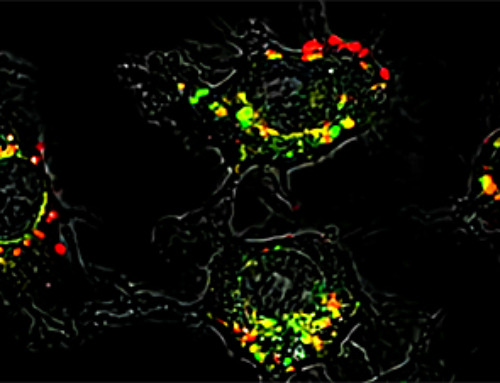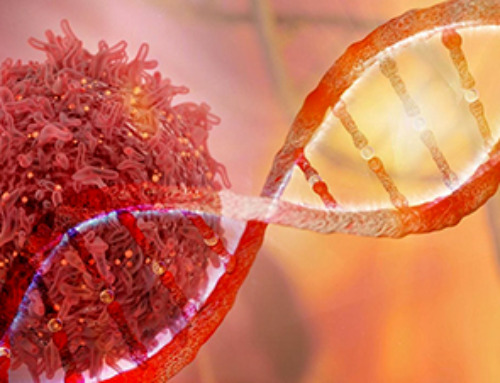Extremely selective silver nanoparticles (AgNPs) were biochemically synthesized from Nilgirianthus Ciliatus leaves (NCL) harvest for spectrophotometric determination of Zn (II) ions to create nano detectors, according to an article published recently in Materials Research Bulletin.
Under atmospheric circumstances, AgNPs were synthesized utilizing NCL extracts found in bioactive compounds.
Biosynthesis of Silver Nanoparticles
Metal nanoparticles of Au, Ag, and Pt have recently demonstrated unique characteristics depending on form, size, and dispersion compared to conventional substances. The Surface Plasmon Resonance (SPR) zone is related to silver nanoparticles (Ag NPs), and it is dependent on particle diameter, particles distance, and adsorbed material.
Ag NPs have unique optical, electrical, and biological characteristics that make them beneficial in medicine for catalysis, imaging, and drug delivery. Physical-chemical and biological approaches can be used to make Ag NPs. However, physical and chemical methods for the production of AgNPs are costly, and their byproducts are detrimental to the environment. As a result, AgNPs are synthesized utilizing a range of biological systems, including fungus, microbes, and vegetation.
Detection of Zinc Ions
Zinc (Zn) is a metallic element that is broadly employed for corrosion prevention in various alloys and nanoalloys, as well as a constituent in batteries. It is a vital trace metal for the human body, and insufficient levels cause immune response alterations such as weakness, Alzheimer’s disease, as well as other disorders.
As a result, Zn ion detectors and assessment tests are necessary, and measurement has been described using atomic absorbance and fluorescence spectroscopy, among other analysis tools.
These operations are costly, and they necessitate a treatment method. Colorimetric approaches, on the other hand, enable a judgment of the quality of a chemical substance. For the manufacture of metal ions-based nanoparticles in colorimetric sensors, this type of Zn optical sensor may be extremely effective and accurate, particularly for metal ion detecting and biomolecule recognition.
Use of Plant Extracts for Synthesis of Metallic Nanoparticles
A number of research articles have been published that concentrate on the creation of metal nanoparticles utilizing foliage as a template in the influence of common reducing agents.
Several plant extracts are now used in the production of metal nanoparticles. Plant-derived secondary chemically reactive compounds are employed as capping, stabilizing, and reducing agents in this research. NCL extracts contained main chemical active chemicals as well as hydroxyl as functional groups, as well as Ag ions in their compositions.
Clean Nilgirianthus Ciliatus Leaves (NCL) were gathered and washed thoroughly with double-distilled liquid before being cut into tiny chunks and air-dried for three to five days under shade at room temperature.
This study aimed to look into the chemically active compounds and perform an identification evaluation on a plant leaves extract from the Acanthaceae family. These plants have had a significant impact on traditional medicinal uses. The leaves of the plant have long been used in traditional medication to cure depurative, jaundice, diuretics, febrifuge, and, more recently, diabetic, painkiller, and feverish remedies.
Nilgirianthus Ciliatus leaves have been used to isolate active molecules such as salicylic acid, diethyl phthalate, benzoic-2-amino-phenyl ester, phthalic acid, and 5,7,8-trihydroxy-4-phenylsulfonyloxy-coumarin of phenolics for pharmacological effects such as antihypertensive therapy, anti-inflammatory, painkiller, antibacterial, and anti-cancer treatments.
The Verdict
Produced synthetically, Ag NPs were generated satisfactorily in the presence of NCL extracts as a capping and reductants in this investigation. XRD, FT-IR, UV-Visible, SEM-EDX, TEMSAED, and BET were used to determine the purity, particle size, structural, visual, and morphological of Ag NPs.
With UV light irradiation, the AgNPs demonstrated high catalytic capabilities for the breakdown of MeB pollutants. Attributed to the prevalence of an abundant hydroxyl group in polyphenols and flavonoids, the good specificity of the manufacture of synthetic AgNPs towards Zn2+ ions has performed outstanding sensing of both absorption and fluorescence sensing capabilities. As a result, biogenic aided AgNPs can be used in industrial treating wastewater and environment monitoring.
News
New nanomedicine wipes out leukemia in animal study
In a promising advance for cancer treatment, Northwestern University scientists have re-engineered the molecular structure of a common chemotherapy drug, making it dramatically more soluble and effective and less toxic. In the new study, [...]
Mystery Solved: Scientists Find Cause for Unexplained, Deadly Diseases
A study reveals that a protein called RPA is essential for maintaining chromosome stability by stimulating telomerase. New findings from the University of Wisconsin-Madison suggest that problems with a key protein that helps preserve chromosome stability [...]
Nanotech Blocks Infection and Speed Up Chronic Wound Recovery
A new nanotech-based formulation using quercetin and omega-3 fatty acids shows promise in halting bacterial biofilms and boosting skin cell repair. Scientists have developed a nanotechnology-based treatment to fight bacterial biofilms in wound infections. The [...]
Researchers propose five key questions for effective adoption of AI in clinical practice
While Artificial Intelligence (AI) can be a powerful tool that physicians can use to help diagnose their patients and has great potential to improve accuracy, efficiency and patient safety, it has its drawbacks. It [...]
Advancements and clinical translation of intelligent nanodrugs for breast cancer treatment
A comprehensive review in "Biofunct. Mater." meticulously details the most recent advancements and clinical translation of intelligent nanodrugs for breast cancer treatment. This paper presents an exhaustive overview of subtype-specific nanostrategies, the clinical benefits [...]
It’s Not “All in Your Head”: Scientists Develop Revolutionary Blood Test for Chronic Fatigue Syndrome
A 96% accurate blood test for ME/CFS could transform diagnosis and pave the way for future long COVID detection. Researchers from the University of East Anglia and Oxford Biodynamics have created a highly accurate [...]
How Far Can the Body Go? Scientists Find the Ultimate Limit of Human Endurance
Even the most elite endurance athletes can’t outrun biology. A new study finds that humans hit a metabolic ceiling at about 2.5 times their resting energy burn. When ultra-runners take on races that last [...]
World’s Rivers “Overdosing” on Human Antibiotics, Study Finds
Researchers estimate that approximately 8,500 tons of antibiotics enter river systems each year after passing through the human body and wastewater treatment processes. Rivers spanning millions of kilometers across the globe are contaminated with [...]
Yale Scientists Solve a Century-Old Brain Wave Mystery
Yale scientists traced gamma brain waves to thalamus-cortex interactions. The discovery could reveal how brain rhythms shape perception and disease. For more than a century, scientists have observed rhythmic waves of synchronized neuronal activity [...]
Can introducing peanuts early prevent allergies? Real-world data confirms it helps
New evidence from a large U.S. primary care network shows that early peanut introduction, endorsed in 2015 and 2017 guidelines, was followed by a marked decline in clinician-diagnosed peanut and overall food allergies among [...]
Nanoparticle blueprints reveal path to smarter medicines
Lipid nanoparticles (LNPs) are the delivery vehicles of modern medicine, carrying cancer drugs, gene therapies and vaccines into cells. Until recently, many scientists assumed that all LNPs followed more or less the same blueprint, [...]
How nanomedicine and AI are teaming up to tackle neurodegenerative diseases
When I first realized the scale of the challenge posed by neurodegenerative diseases, such as Alzheimer's, Parkinson's disease and amyotrophic lateral sclerosis (ALS), I felt simultaneously humbled and motivated. These disorders are not caused [...]
Self-Organizing Light Could Transform Computing and Communications
USC engineers have demonstrated a new kind of optical device that lets light organize its own route using the principles of thermodynamics. Instead of relying on switches or digital control, the light finds its own [...]
Groundbreaking New Way of Measuring Blood Pressure Could Save Thousands of Lives
A new method that improves the accuracy of interpreting blood pressure measurements taken at the ankle could be vital for individuals who are unable to have their blood pressure measured on the arm. A newly developed [...]
Scientist tackles key roadblock for AI in drug discovery
The drug development pipeline is a costly and lengthy process. Identifying high-quality "hit" compounds—those with high potency, selectivity, and favorable metabolic properties—at the earliest stages is important for reducing cost and accelerating the path [...]
Nanoplastics with environmental coatings can sneak past the skin’s defenses
Plastic is ubiquitous in the modern world, and it's notorious for taking a long time to completely break down in the environment - if it ever does. But even without breaking down completely, plastic [...]





















